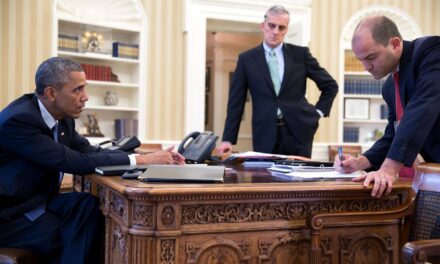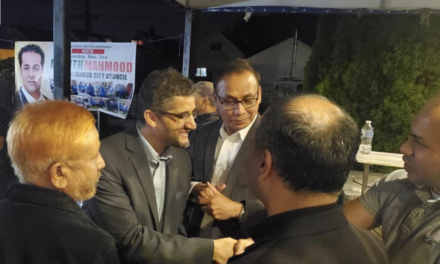Americans define themselves as a melting pot of people from all parts of the world and different ethnicities who came together to form a new country. The U.S. government has designated specific times of the year to acknowledge the various heritages within America. These “heritage month” celebrations educate the public on the different ethnic, cultural, and religious groups’ histories and contributions to the total American experience.
National Hispanic Heritage Month (HHM) is observed September 15 to October 15 each year. With an estimated 55.6 million people of Hispanic origin, they are the largest ethnic or racial minority in the U.S. making up about 17.6% of the total population. HHM is meant to acknowledge, educate, and honor the culture, history, and contributions of this community of Americans whose ancestors came from Mexico, the Caribbean, Central and South America, and Spain.
Beginning in 1968, Hispanic Heritage Month was originally observed as “Hispanic Heritage Week” under the administration of President Lyndon Johnson. It was part of the nationwide movement of the period to acknowledge and celebrate America’s ethnic minorities. Later, in 1988, it was extended to cover a 30-day period. However, it didn’t begin on September 1, but rather from September 15 to October 15 to coincide with the independence days of several Latin American countries.
For instance, on September 15, 1821, Costa Rica, El Salvador, Guatemala, Honduras, and Nicaragua declared their independence from Spain. Mexico began its fight for independence on September 16, 1810, and Chile declared its independence from Spain on September 18, 1810.
Although the terms “Hispanic” and “Latino” are often used interchangeably, in reality, they have nuanced differences. Hispanic is a Spanish word that means “belonging or relating to Hispania, Spain,” and “belonging or relating to Hispanoamérica” which are countries in the Americas where Spanish is spoken. Latino is a cultural term that refers to people who are from or descended from people from Latin America. Latinx is gender inclusive for the group (Latino – male/Latina – female).
In general, Latin America refers to Mexico, the entire continent of South America, Central America, and the islands of the Caribbean. The inhabitants of this region are of various ethnic groups and cultural histories, but they do share the experience of Spanish and Portuguese occupation in their native lands from the 15th to 18th century.
These nuanced differences demonstrate the need to acknowledge and honor these Americans. Due to the existence of Islam in Spain – Andalusia – the Spanish influence migrated to the Americas and Caribbean while also having long influenced the total Muslim world. For example, Spanish words like Alquimia (alchemy) correspond to Arabic Al-kimiya (كيمياء) or Cifra (zero digit) is similar to the Arabic word Sifr (صفر).
A 2020 article in U.S. News and World Report reported that an Institute for Social Policy and Understanding study revealed that Muslims in the U.S. who identified as Latino made up about one percent of the total American Muslim population in 2009. However, nearly a decade later, that figure had increased to seven percent and continues to grow.
Hispanic Muslims themselves have performed their own Dawa (sharing of Islam) to inform the Muslim community and the American society at large about themselves. Historically, Puerto Rican Muslims were part of the earlier nationalist movements to Islam in the 1930’s. Puerto Rican poet Piri Thomas, the author of Down These Mean Streets, wrote about listening to the term “Allahu Akbar” (God is Greater) when he lived in Spanish Harlem. La Alianza Islámica, the Islamic Alliance, was one of the first Latino Muslim groups in America. The Latino American Da’wah Organization (LADO) was founded in 1997 to provide Dawa, resources, education, and support for Latino Muslims.
Many community Eid celebrations in the U.S. include the candy-filled piñata associated with Mexican culture. American Muslims of all ethnic backgrounds enjoy meat-filled empanadas, tacos, and nachos with pico de gallo and guacamole. Flan, powdered sugar-dusted churros and Tres Leches Cake frequently appear on Eid day dessert tables. Muslim Eid banners available include Arabic, English, and Spanish greetings: “عِيد مُبَارَك”, “Happy Eid” and “Felix Eid”.
Hispanic and Latino Muslims have been instrumental in providing copies of the Quran in Spanish that are a Dawa to the larger Hispanic community. With Spanish quickly and unofficially becoming America’s “second” national language, the need for Islamic information in Spanish has never been more critical. Studies show that a large percentage of Hispanic and Latinx Muslims are women who may also marry Muslim men from the Middle East, further deepening cultural blending.
Just as many Masajid in America will hold events that honor African-American History Month in February, Women’s History Month in March, and now, since 2017, Arab American Heritage in April, the inclusion of Hispanic Heritage Month is crucial. Their contributions are varied and impactful:
- Khadijah Rivera who founded the first organization, PIEDAD, for Latinas of the Islamic faith in 1988.
- Jamie ‘Mujahid’ Fletcher who founded IslamInSpanish, a non-profit organization dedicated to producing Spanish multimedia to “educate Latinos about Islam worldwide”.
- Rapper Hamza Perez Hamza the founder of the S.H.E.H.U. Program (Services Helping to Empower and Heal Urban Communities) and subject of the 2009 movie “New Muslim Cool”.
So let us celebrate the diversity and culture of our Latinx/Hispanic brothers and sisters.
“O humankind! We created you from a single (pair) of a male and a female, and made you into nations and tribes, that you may know each other. Verily the most honored of you in the sight of Allah is (the person who is) the most righteous of you. And Allah has full knowledge and is well acquainted (with all things)”
(Quran 49:13).














